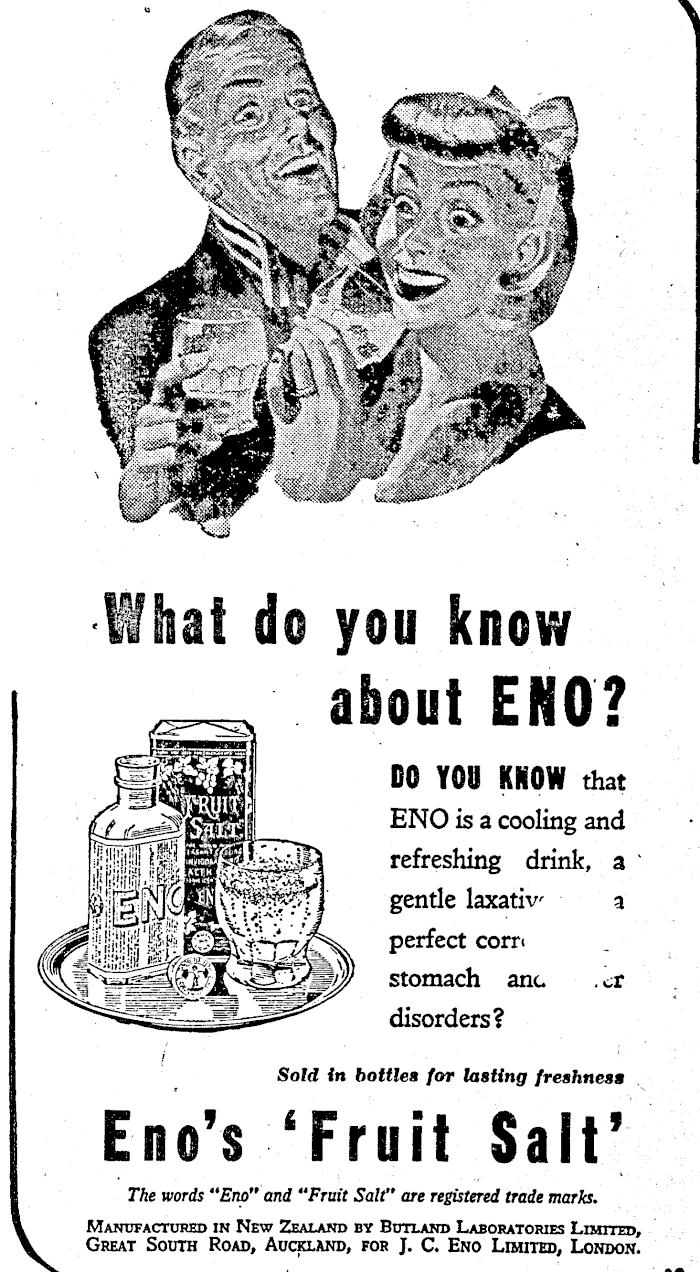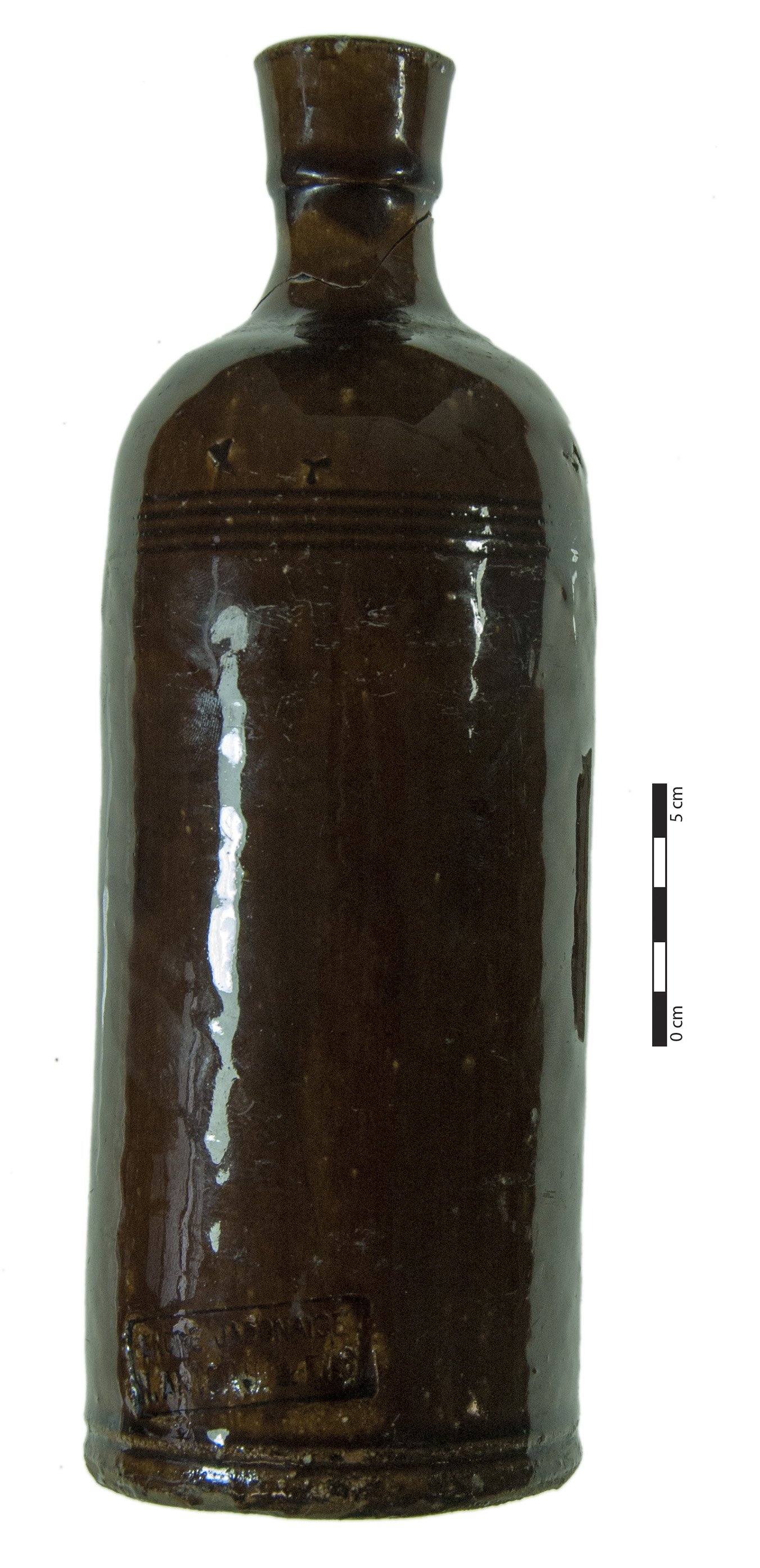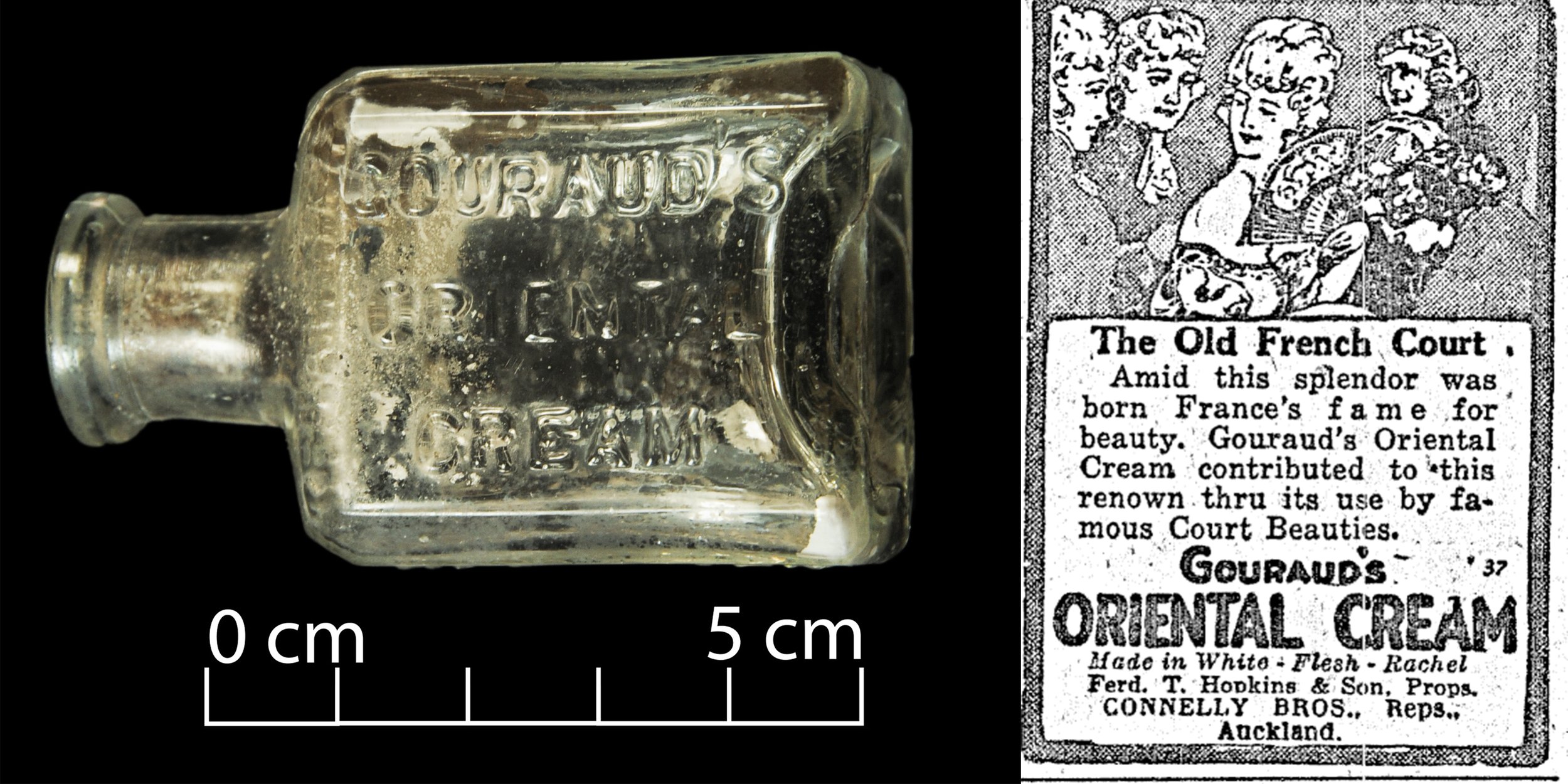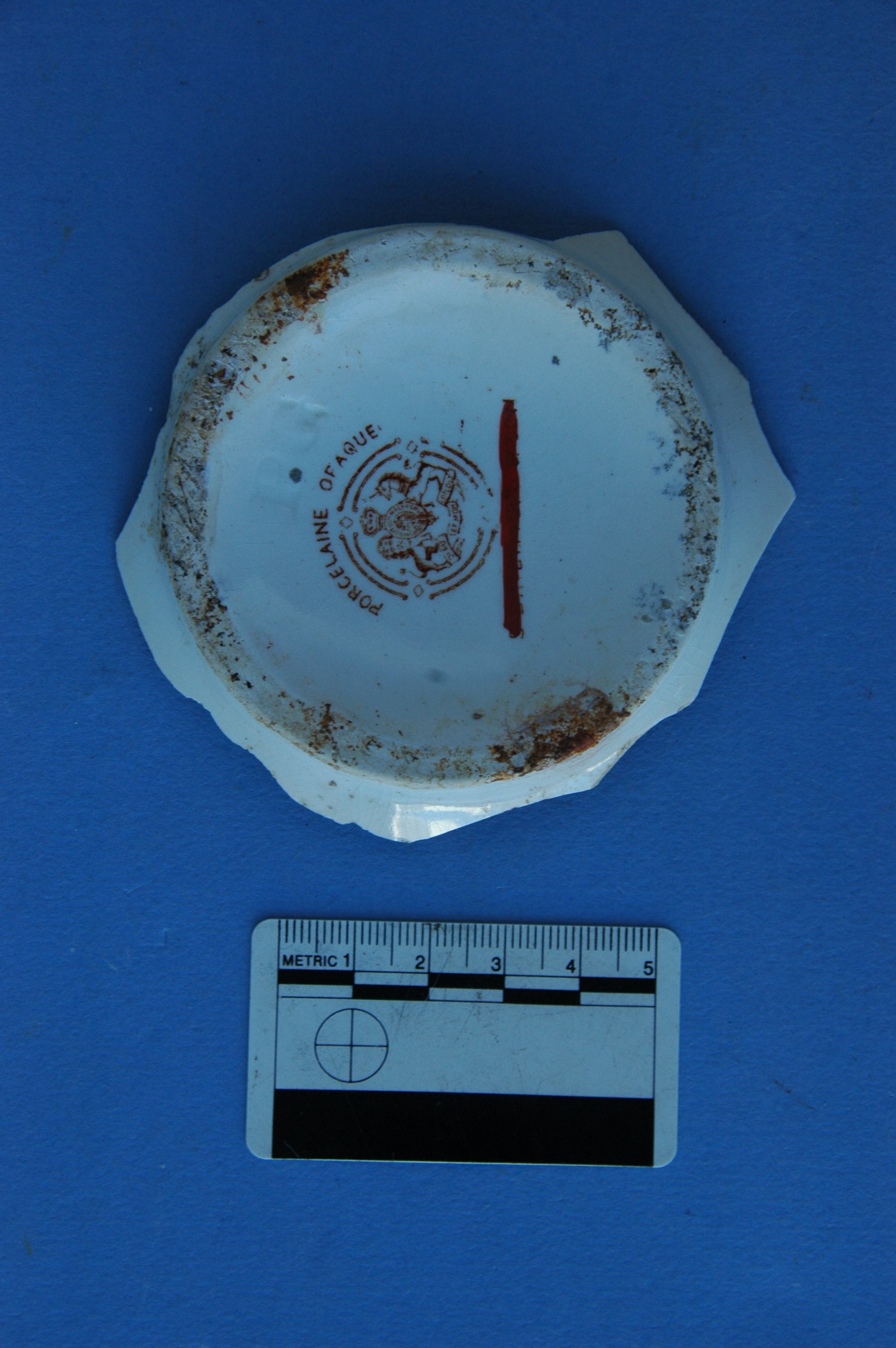A short post in honour of International Women’s Day (which was on Friday, but eh, still relevant).
There are several ways that we can find the stories of women’s lives through material culture, from the way that women are depicted on artefacts, their choices and tastes as consumers and, most pertinent to this post, the way that they are framed as a consumer market through advertising. Advertising can be its own form of social commentary, drawing attention to – often over-inflated or sensationalised – contemporary assumptions about people’s worries, cares, likes and dislikes and daily habits. It can also be terribly funny or simply just terrible and I have absolutely no doubt that people will be saying the same thing about our advertising culture 150 years from now.
Not relevant to anything in this post, but genuinely one of my favourite historic advertisements. Their eyes, dear god, their eyes. Image: Otago Daily Times 24/08/1950: 9).
We have many examples of products marketed to women that come up in the course of archaeological research (often these are just incidental adverts that come up when looking for something else, like how too much salt and too much jealousy might cause the bust to ‘fall ’; Pelorus Guardian and Miners’ Advocate 25/03/1898: 6). The one I’d like to talk about today is a ‘medicated’ tonic wine from the early twentieth century, specifically a brand called ‘Vibrona, The Ideal Tonic’, a bottle of which was found on a site in Hereford Street. Vibrona, along with other tonic wines, was marketed to women (particularly middle-class women), through women’s magazines and through repeated reference to its aid in alleviating ‘female complaints’ – a generic term that referenced everything from menstrual pain, breastfeeding pain, post-natal health issues and “maternity weakness”, to general lethargy and nervous disorders (Loeb 2020; Thames Star 17/07/1909: 4; National Library of Medicine 2024). Even when women, or their complaints, weren’t referenced by name, women’s faces were still used in the advertisements, making the intended customer base very clear (Timaru Herald 21/10/1935: 10).
Feeling saggy? Image: Timaru Herald 21/10/1935: 10.
These tonic wines could be up to 15-20% alcohol, higher than most non-fortified wines today, but their ‘medicated’ label deliberately misled consumers into thinking that the harmful aspects of the ‘wine’ had been removed (Loeb 2020; British Medical Journal 29/05/1909: 1307-1309). Rhetoric of the day included accounts of teetotallers being duped into consuming alcohol thanks to the medicated moniker (Loeb 2020). In this, tonic wines were similar to many patent medicines and remedies, which also claimed curative properties but could primarily be composed of alcohol (perhaps with some herbs and sugar as a disguise). Apparently, tonic wines themselves contained a range of ingredients alongside the alcohol, from beef extract, malt extract and cocoa leaves to quinine and cocaine (were you expecting cocaine to round out that list? In my experience of late nineteenth and early twentieth century medicines, you should quite frequently expect cocaine…; Loeb 2020; BMJ 29/05/1909: 1307-1309). Vibrona itself seems to have contained chinchona bark, from which we get quinine, the anti-malarial. A British Medical Journal analysis in 1909 suggested that Vibrona did contain a small proportion of chinchona bark (alongside almost 20% alcohol, but with the quinine itself removed – although this was disputed by the manufacturers the following month (BMJ 29/05/1909: 1307-1309; 19/06/1909: 1491). The English manufacturers, Fletcher, Fletcher and Co., did advertise Vibrona as a good option for those customers who normally got a headache from quinine. Read into that what you will…
Tonic wines were subject to campaigning by temperance organisations in the early twentieth century, due to their misleading nature and the grey areas they occupied in British legislation about alcohol, which allowed medicated alcohol to be sold without a license. Temperance campaigning was also heavily based on a stated desire to protect women from their harmful effects (Loeb 2020). It was this last motivation that came to frame much of the narrative of their campaign: however much weight the other reasons for opposing the unlicensed sale of tonic wines had, it was their harm to women – and the need to protect women – that was chosen as a fundamental thread by which public and professional support for their regulation or prohibition might be generated. This narrative included “the spectre of female teetotallers soaked in liquor, dirty and lying in the gutter” (Loeb 2020: 16) and the framing of some women as gullible and easily misled into alcoholism by the recommendation of profit-driven chemists and druggists. It is worth noting here that the impact of alcoholism on women was a core tenet of the temperance movement, particularly the impact of men’s alcoholism on women’s lives – we can see it here in New Zealand history with the famous example of the Women’s Christian Temperance Union, which played a key role in achieving women’s suffrage in 1893. The impacts of alcoholism on women in general during the nineteenth century were very real, and the efforts of temperance campaigners to minimise this were anchored in a desire, that I am personally very grateful for, to materially and politically improve the lives of women for generations to come. That said, I think there are some interesting impressions to be taken from the story of Vibrona – and tonic wines – in particular, that show some of the different ways that we can read attitudes towards women in the past and the ways we have to be careful about using historical sources to do so.
A letter to the editor, written in 1898 by Fanny Cole, president of the Women’s Christian Temperance Union in the early 1900s, framing the ‘no license’ issue in terms of its impact on women, taken from the ‘And yet, she persisted’, blog post on Christchurch Uncovered. Image: Press 28/11/1898: 2).
To start with, marketing a medicated alcohol – a fairly generic remedy, when all is said and done – as a solution for the catch-all diagnosis of “women’s complaints” suggests to me an understanding of the consumer power of women, especially – in this case – middle-class women, but a lack of knowledge or interest in their health and all its variation beyond that generic grouping. This is not an uncommon refrain – we are still, today, reckoning with the way that women’s health issues have been ignored or generalised by the medical and pharmaceutical industries. It is also worth acknowledging that framing women as a consumer market is not just a positive recognition of women’s power as consumers – it also allows them to be forced into a somewhat narrow consumer stereotype, subject to the expectations of a patriarchal society (anyone else who has issues with the gendered lines of cosmetic and perfume marketing will know what I mean). Marketing along gendered lines, for both men and women, is very much about tapping into stereotypical and generalised expectations of what it means to be either in this society and, by doing so, it often reinforces those gender stereotypes back to us, thereby increasing their efficiency as a marketing technique (if you can’t tell, I’m a bit cynical and very irritated by this).
How DOES she stay so young? Also, I find the claim of “delicious wine” to be a bit suspect. Image: Jennings and Keers 2018.
On the other side of the tonic wine example, we also have the temperance movement’s use of the damsel in distress narrative when it came to policing the consumption of products like Vibrona, playing on attitudes towards women as people in need of protection, weak willed and gullible (check out Loeb 2020 for a much more nuanced discussion of this). This is where the danger of looking at history through the eyes of advertising comes in. Women are no more in need of protection, no more inherently weak-willed or gullible than any other gender, not now and not then. What we (and everyone else!) are in need of is enfranchisement and empowerment, to be valued and respected beyond the constraints of gender. It is no coincidence that this is part of where the temperance movement in New Zealand did lead, towards women’s suffrage and the ongoing fight for gender equality.
So, while using advertising and consumer culture as an insight into social attitudes and social commentary is interesting and can be really useful, it is by no means without its own biases and cannot be used uncritically. Always question the rhetoric. I want to end by acknowledging that working in a field that spends a lot of time researching the past can sometimes be a bit of a slog if you’re a woman (or a person of colour, or LGBTQ+, or any of the other groups of people that have historically suffered, been diminished and oppressed). It’s a little bit of an exercise in rolling your eyes, laughing at the more outlandish claims and learning how to moderate the frustration and anger and sadness and solidarity that inevitably strikes when you remember the actual women living with it all. I can only hope we do them justice.
Jessie
References
British Medical Journal 1909. Online, available https://www.bmj.com/content
Jennings, C. and Keers, P., 2018. ‘The wines that made us (4): Sanatogen’, in Sediment. Online, available at https://sedimentblog.blogspot.com/2018/02/the-wines-that-made-us-4-sanatogen.html
Loeb, L., 2020. ‘Desperate housewives: The rise and fall of the campaign against medicated wines in twentieth-century Britain’, in Pharmaceutical Historian, Vol. 50(1): 16-25. Available at https://www.ingentaconnect.com/content/bshp/ph/2020/00000050/00000001/art00002?crawler=true&mimetype=application/pdf
Tapping, R. 2017. ‘Tonic wine’, in AJP: the Australian Journal of Pharmacy, Vol. 98, p. 16.





















































